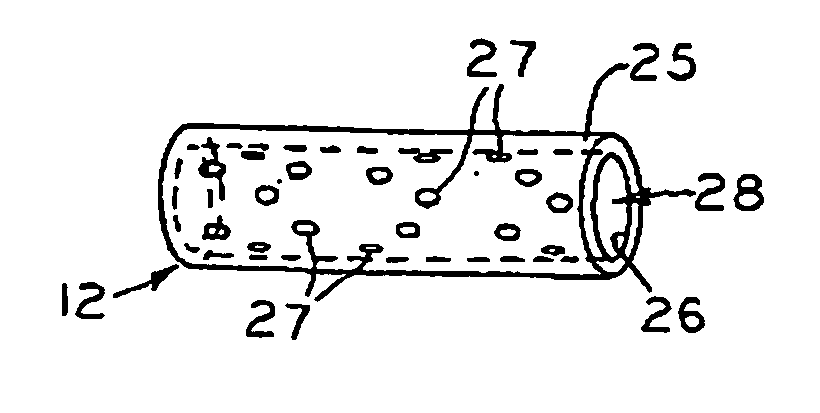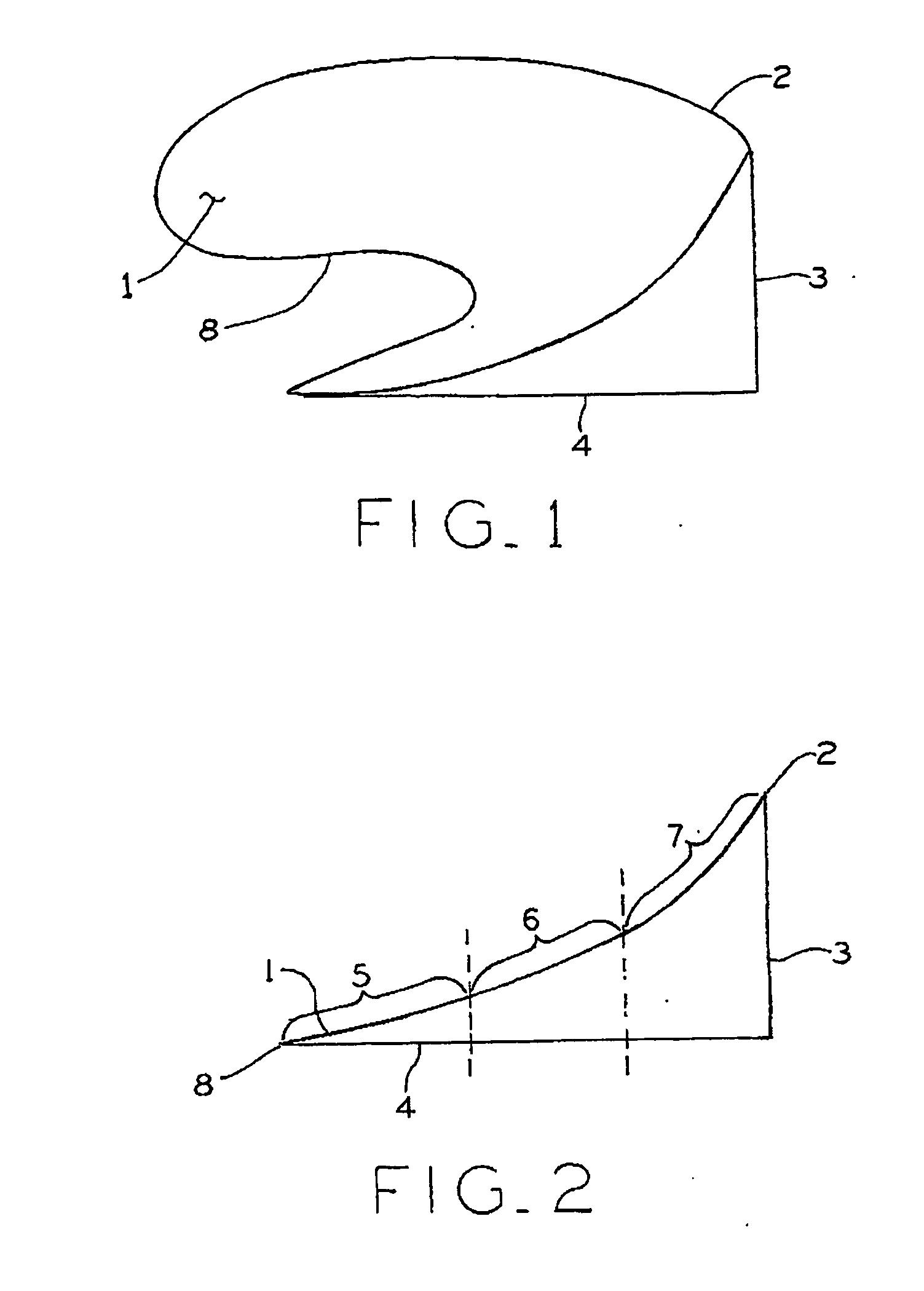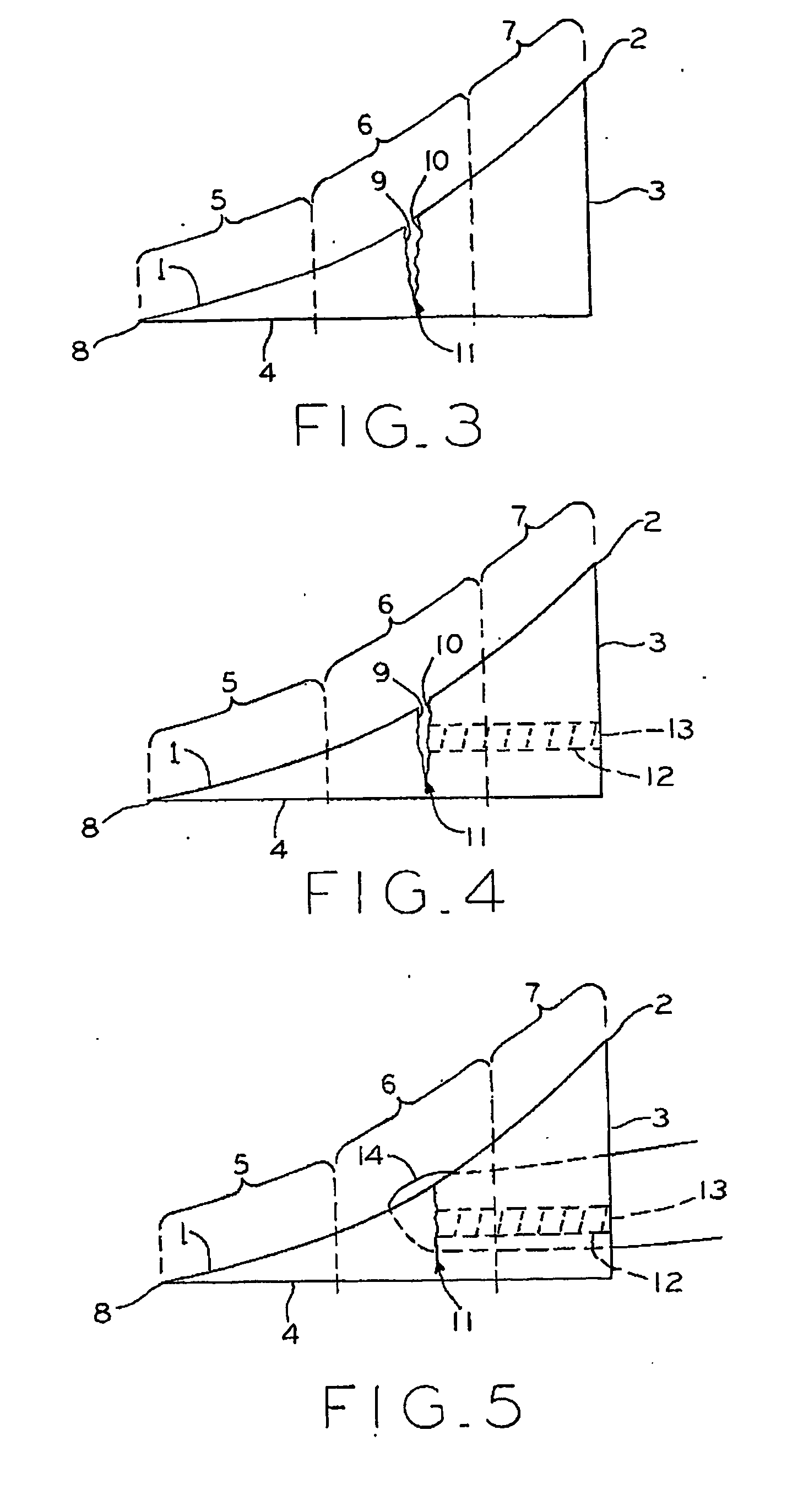[0011] It is an objective of the present invention to provide a channel for blood, blood components and / or nutrients, and cells to travel from the vascular (red) zone such as in knee meniscus or synovium (i.e. knee
capsule) to the avascular (white) or partially vascular (red / white) zone to facilitate healing and / or regeneration in these zones.
[0012] It is also an objective of the present invention to provide a biocompatible tube. The tube can have a stopping brim to prevent it from being inserted completely through the tissue. The tube is intended to be located within
meniscal tissue such that it provides a channel from the vascular zone of the tissue (meniscus or synovium) to the avascular (white) or partially vascular (red / white) region. The tube wall can have openings, perforations, holes, or
porosity that allow for blood, nutrients, and cells to enter the tube through the walls of the tube or
stent. The tube wall exterior can be roughened or have protrusions or threads that will facilitate its fixation to the
meniscal tissue. The “tube” could be a cylinder with a porous configuration such that blood, nutrients, and cells could travel within and through the device.
[0013] It is also an objective of the present invention to provide a pathway through which blood, nutrients, and cells can pass to facilitate healing of an avascular (or partially vascular) tear / defect or to facilitate regeneration of avascular (or partially vascular) tissue when an
implant is placed in addition to the tube(s) after performing a partial meniscectomy. In the case of a partial meniscectomy, the channel could function to deliver a blood or
fibrin clot to the volume space of meniscus that was removed such that the clot acts as a
scaffold in which cells can travel and propagate, thus, facilitating regeneration of that portion of the meniscus. In this case the open channel would also provide the access of the vascular area components to the in situ
scaffold (i.e. blood or
fibrin clot).
[0014] It is also an objective of the present invention to be comprised of a network of biocompatible tubes that are either attached to, integral with, or in close proximity to a meniscus
implant. The implant is also comprised of a
biocompatible material and can have
interconnected porosity. The tube can have a stopping brim to prevent it from being inserted completely through the tissue. The meniscus implant / tube(s) device is located adjacent to avascular (white or red / white) meniscal tissue such that the tubes protrude into the meniscal tissue to or through the
vascular tissue (meniscus or synovium). The tube(s) provides a channel from the vascular zone of the tissue (meniscus or synovium) to the avascular or partially vascular region into or onto the meniscus implant. This meniscus implant / tube(s) device (i.e. tubes integrated or attached to a
scaffold) provides a pathway through which blood, nutrients, and cells can pass to the meniscus implant so that healing and regeneration of an avascular (or partially vascular) defect or tear can be accomplished. The tube portion of the meniscus / tube(s) device can have any or all of the same features as described in the tube device alone.
[0015] It is also an objective of the present invention to provide a method for repairing damaged or diseased
fibrocartilage tissue (i.e. meniscus of the knee, labrum of the shoulder, acetabular labrum of the hip,
articular disc of the
wrist, spinal disc, temporomandibular disc, etc.). After locating the tear or degeneration in the avascular or partially vascular zone, one of two tasks can be performed. The tissue can be removed from the inner portion of the tear (i.e. perform a partial meniscectomy) or the tear can be repaired using a number of standard repair techniques (vertical or horizontal mattress suturing, Mitek's RapidLoc™ Meniscal Repair Device for the meniscus, Bionx Arrow™ for the meniscus, etc.). If a partial meniscectomy is to be performed followed by implantation of a meniscus regenerating or replacing device or implant, then the
stent can be placed into the remnant native meniscal tissue such that it provides an open channel through which blood, nutrients, and cells can flow from the vascular region of the tissue to the implant, thus facilitating healing or regeneration. After a partial meniscectomy, a meniscus / tube(s) device (i.e. tubes integrated or attached to a scaffold) could be implanted and fixed to the remaining native meniscal tissue such that the tube portion of the device protrudes into and / or through the vascular zone of the meniscus and / or synovium. The delivery of the meniscus / tube(s) device could be accomplished arthroscopically with standard techniques. The fixation could be accomplished arthroscopically as well using standard devices and techniques (suture, meniscal repair devices such as DePuy Mitek's RapidLoc, Linvatec's Bionx Arrow, etc.). If the tear is to be repaired (instead of removing the tissue via a partial meniscectomy), then the stent can be arthroscopically placed either using an
all inside or inside-out technique from the outer tear surface to or through the vascular region (providing a channel) or through both tear surfaces to the vascular region (providing a channel and a fixation for the tear), thus, facilitating repair of the avascular or partially vascular tear. Alternatively, the stent could be arthroscopically delivered using an outside-in technique.
[0016] It is also an objective of the present invention to provide a method for delivering biological treatments [i.e. blood,
platelet rich
plasma,
bone marrow, stem cells,
fibroblast cells, synoviocyte cells, other cells, angiogenic factors (new
blood vessel formation growth factors such as VEGF, IGF, etc. . . . ), other growth factors,
hyaluronic acid,
gene therapies, other biologic molecules etc.], drugs [
analgesic, anti-clotting, clotting, anti-inflammatory, anti-infectives, etc. . . . ], and other substances to the tear or defect area through the tube. After the tube device is positioned or during / before the
insertion process, a substance could be delivered through the tube either to the tear / defect area or to the vascular area. The substance could enhance or initiate healing, increase
blood flow, improve
angiogenesis, induce clotting in the duct and tear / defect, deliver cells, deliver growth factors, deliver biologic elements, etc.
 Login to View More
Login to View More  Login to View More
Login to View More 


